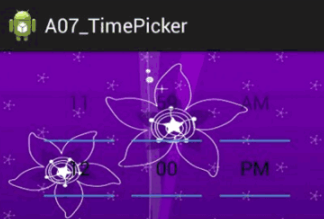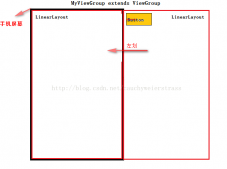最近在改bug的时候发现在windowManager.addView的时候会发生莫名其妙的崩溃,那个崩溃真的是让你心态爆炸,潜心研究了两天window相关的东西,虽然不是很深奥的东西,本人也只是弄清楚了window的添加逻辑,在此分享给大家:
一、悬浮窗的概念
在android中,无论我们的app界面,还是系统桌面,再或者是手机下方的几个虚拟按键和最上方的状态栏,又或者是一个吐司。。。我们所看到的所有界面,都是由一个个悬浮窗口组成的。
但是这些窗口有不同的级别:
- 系统的是老大,是最高级别,你没见过你下载的什么app把你的下拉菜单盖住了吧-。=
- 其次是每一个应用,都有自己的一个应用级别窗口。
- 在应用之内能创建好多的界面,所以还有一种是应用内的窗口。
基于上述三种,android把悬浮窗划分成三个级别,并通过静态int型变量来表示:
|
1
2
3
4
5
6
7
8
9
|
/** * Start of system-specific window types. These are not normally * created by applications. **/public static final int FIRST_SYSTEM_WINDOW = 2000;/** * End of types of system windows. **/public static final int LAST_SYSTEM_WINDOW = 2999; |
2000~2999:在系统级别的悬浮窗范围内,一般我们要想创建是需要申请权限。
|
1
2
3
4
5
|
public static final int FIRST_SUB_WINDOW = 1000;/** * End of types of sub-windows. **/public static final int LAST_SUB_WINDOW = 1999; |
1000~1999:子窗口级别的悬浮窗,他如果想要创建必须在一个父窗口下。
|
1
2
|
public static final int TYPE_BASE_APPLICATION = 1;public static final int LAST_APPLICATION_WINDOW = 99; |
1~99:应用程序级别的悬浮窗,作为每个应用程序的基窗口。
在每段的范围内都有众多个窗口类型,这个具体就不说了,因为太多了根本说不完。。
但是说了这么半天,悬浮窗到底是个啥东西,可能这个名词听得很多,但是仔细想想android中用到的哪个控件还是哪个类叫悬浮窗?没有吧,那么View总该知道吧(不知道别说你是做android的)
其实说白了悬浮窗就是一个被包裹的view。因为除了一个view他还有很多的属性:长宽深度,类型,证书等等东西,只是属性很多而且属性之间的依赖关系有一些复杂而已。简单的来说可以这么理解。
二、WindowManager介绍
上面简单介绍了悬浮窗的概念,而WindowManager是对悬浮窗进行操作的一个媒介。
WindowManager是一个接口,他是继承了ViewManager接口中的三个方法:
|
1
2
3
4
5
6
|
public interface ViewManager{ public void addView(View view, ViewGroup.LayoutParams params); public void updateViewLayout(View view, ViewGroup.LayoutParams params); public void removeView(View view);} |
windowManage暴露给我们的只是这个三个方法,真的是简单粗暴,但是很实用。
这三个方法看名字就知道含义了,增删改嘛,就不多说啦。
而在上面提到的对于悬浮窗的三种分类,也是WindowManager的内部类:WindowManager.LayoutParams,关于LayoutParams是什么在这里就不多说了。这不是我们的重点。
我们平时想要添加一个悬浮窗,就会使用第一个方法:
|
1
2
|
WindowManager windowManager = getWindowManager();windowManager.addView(.....); |
我们在getWindowManager获取的类,实际上是WindowManager的是WindowManager的实现类:WindowManagerImpl。接下来我们走一下添加悬浮窗的流程。
三、悬浮窗添加流程
入口肯定是从自己的addView中,上面说到了WindowManager的实现类是WindowManagerImpl,来看一下:
|
1
2
3
4
5
|
@Override public void addView(@NonNull View view, @NonNull ViewGroup.LayoutParams params) { applyDefaultToken(params); mGlobal.addView(view, params, mContext.getDisplay(), mParentWindow);} |
这里有两步:第一步是给layoutparams设置一个默认的令牌(就是token这个属性,至于这个干什么的等会再说)
|
1
2
3
4
5
6
7
8
9
10
11
12
13
|
private void applyDefaultToken(@NonNull ViewGroup.LayoutParams params) { // 设置条件:有默认令牌,而且不是子窗口级别的悬浮窗 if (mDefaultToken != null && mParentWindow == null) { if (!(params instanceof WindowManager.LayoutParams)) { throw new IllegalArgumentException("Params must be WindowManager.LayoutParams"); } // 如果没有令牌就设置默认令牌 final WindowManager.LayoutParams wparams = (WindowManager.LayoutParams) params; if (wparams.token == null) { wparams.token = mDefaultToken; } }} |
然后调用了mGlobal的addView:
|
1
2
3
4
5
6
7
8
9
10
11
12
13
14
15
16
17
18
19
20
21
22
23
24
25
26
27
28
29
30
31
32
33
|
public void addView(View view, ViewGroup.LayoutParams params, Display display, Window parentWindow) { /**进行一系列判空操作。。。**/ if (parentWindow != null) { parentWindow.adjustLayoutParamsForSubWindow(wparams); } else { // If there's no parent, then hardware acceleration for this view is // set from the application's hardware acceleration setting. final Context context = view.getContext(); if (context != null && (context.getApplicationInfo().flags & ApplicationInfo.FLAG_HARDWARE_ACCELERATED) != 0) { wparams.flags |= WindowManager.LayoutParams.FLAG_HARDWARE_ACCELERATED; } } ViewRootImpl root; root = new ViewRootImpl(view.getContext(), display); view.setLayoutParams(wparams); mViews.add(view); mRoots.add(root); mParams.add(wparams); // do this last because it fires off messages to start doing things try { root.setView(view, wparams, panelParentView); } catch (RuntimeException e) { // BadTokenException or InvalidDisplayException, clean up. if (index >= 0) { removeViewLocked(index, true); } throw e; } }} |
看到WindowManagerGLobal中有三个属性: mViews、mRoots、mParams,可以大胆猜测这个类中保存了我们进程中的所有视图以及相关属性。在这里主要关注一下ViewRootImpl的这个实例对象root,接下来的会走进root的setView中。
ViewRootImpl的setView方法内容有点多,我这里就截取关键的两部分:
1.
|
1
2
3
4
5
6
7
8
9
|
int res; /** = WindowManagerImpl.ADD_OKAY; **/try { mOrigWindowType = mWindowAttributes.type; mAttachInfo.mRecomputeGlobalAttributes = true; collectViewAttributes(); res = mWindowSession.addToDisplay(mWindow, mSeq, mWindowAttributes, getHostVisibility(), mDisplay.getDisplayId(), mWinFrame, mAttachInfo.mContentInsets, mAttachInfo.mStableInsets, mAttachInfo.mOutsets, mAttachInfo.mDisplayCutout, mInputChannel); |
创建了一个名为res的int类型变量,他要获取到的是悬浮窗添加的结果:成功或者失败。
2.
|
1
2
3
4
5
6
7
8
9
10
11
12
13
14
15
16
17
18
19
20
21
22
23
24
25
26
27
28
29
30
31
32
33
34
35
36
37
38
39
40
41
42
43
44
45
46
47
|
if (res < WindowManagerGlobal.ADD_OKAY) { mAttachInfo.mRootView = null; mAdded = false; mFallbackEventHandler.setView(null); unscheduleTraversals(); setAccessibilityFocus(null, null); switch (res) { case WindowManagerGlobal.ADD_BAD_APP_TOKEN: case WindowManagerGlobal.ADD_BAD_SUBWINDOW_TOKEN: throw new WindowManager.BadTokenException( "Unable to add window -- token " + attrs.token + " is not valid; is your activity running?"); case WindowManagerGlobal.ADD_NOT_APP_TOKEN: throw new WindowManager.BadTokenException( "Unable to add window -- token " + attrs.token + " is not for an application"); case WindowManagerGlobal.ADD_APP_EXITING: throw new WindowManager.BadTokenException( "Unable to add window -- app for token " + attrs.token + " is exiting"); case WindowManagerGlobal.ADD_DUPLICATE_ADD: throw new WindowManager.BadTokenException( "Unable to add window -- window " + mWindow + " has already been added"); case WindowManagerGlobal.ADD_STARTING_NOT_NEEDED: // Silently ignore -- we would have just removed it // right away, anyway. return; case WindowManagerGlobal.ADD_MULTIPLE_SINGLETON: throw new WindowManager.BadTokenException("Unable to add window " + mWindow + " -- another window of type " + mWindowAttributes.type + " already exists"); case WindowManagerGlobal.ADD_PERMISSION_DENIED: throw new WindowManager.BadTokenException("Unable to add window " + mWindow + " -- permission denied for window typ + mWindowAttributes.type); case WindowManagerGlobal.ADD_INVALID_DISPLAY: throw new WindowManager.InvalidDisplayException("Unable to add window " + mWindow + " -- the specified display can not be found"); case WindowManagerGlobal.ADD_INVALID_TYPE: throw new WindowManager.InvalidDisplayException("Unable to add window " + mWindow + " -- the specified window type " + mWindowAttributes.type + " is not valid"); } throw new RuntimeException( "Unable to add window -- unknown error code " + res); } |
第二部分是res返回失败的所有情况,在添加成功的时候res为OKAY,而非OKAY的情况就是上述情况。
接下来来看一下添加悬浮窗的操作,就是1中mWindowSession.addToDisplay。mWindowSession类型如下:
|
1
|
final IWindowSession mWindowSession; |
在这里其实用到了aidl跨进程通信,最终执行该方法的类是Session:
|
1
2
3
4
5
6
7
8
|
@Overridepublic int addToDisplay(IWindow window, int seq, WindowManager.LayoutParams attrs, int viewVisibility, int displayId, Rect outFrame, Rect outContentInsets, Rect outStableInsets, Rect outOutsets, DisplayCutout.ParcelableWrapper outDisplayCutout, InputChannel outInputChannel) { return mService.addWindow(this, window, seq, attrs, viewVisibility, displayId, outFrame, outContentInsets, outStableInsets, outOutsets, outDisplayCutout, outInputChannel);} |
这个mService就是一个关键了系统类——WindowMamagerService(WMS)。到了这里我们简单过一下思路:在addView之后,通过WindowManagerGlobal进行一些相关配置,传入ViewRootImpl,再通过aidl方式发送给WMS系统服务。
可能有小伙伴会疑惑。好端端的为什么要用aidl实现?最开始本人也有这个疑惑,但是后来想了想所有的窗口无论系统窗口还是第三方app,窗口都是要通过一个类去进行添加允许判断,这里使用aidl是在合适不过的了。我们接着看一下WMS的addWindow方法:
这个addWindow方法又是一段超长的代码,所以也就不全粘,说一下他的简单流程吧,主要是分为三步:权限判断、条件筛选、添加窗口
WMS的addWindow方法:
|
1
2
3
4
|
int res = mPolicy.checkAddPermission(attrs, appOp);if (res != WindowManagerGlobal.ADD_OKAY) { return res;} |
首先进行一个权限判断,
|
1
|
final WindowManagerPolicy mPolicy; |
WindowManagerPolicy的实现类是PhoneWindowManagerPolicy,看一下他的实现:
又是小一百行的代码,我们拆开来看:
|
1
2
3
4
5
6
7
8
9
10
11
12
13
14
15
16
17
18
19
20
21
22
23
24
25
26
27
28
29
30
31
|
//排除不属于三种类型悬浮窗范围内的type//很明显的三段排除。if (!((type >= FIRST_APPLICATION_WINDOW && type <= LAST_APPLICATION_WINDOW) || (type >= FIRST_SUB_WINDOW && type <= LAST_SUB_WINDOW) || (type >= FIRST_SYSTEM_WINDOW && type <= LAST_SYSTEM_WINDOW))) { return WindowManagerGlobal.ADD_INVALID_TYPE;}//不是系统级别的悬浮窗直接满足条件if (type < FIRST_SYSTEM_WINDOW || type > LAST_SYSTEM_WINDOW) { return ADD_OKAY;} //以下几种不是系统警告类型的系统弹窗,会满足条件,除此之外的使用默认判断的方式 if (!isSystemAlertWindowType(type)) { switch (type) { case TYPE_TOAST: outAppOp[0] = OP_TOAST_WINDOW; return ADD_OKAY; case TYPE_DREAM: case TYPE_INPUT_METHOD: case TYPE_WALLPAPER: case TYPE_PRESENTATION: case TYPE_PRIVATE_PRESENTATION: case TYPE_VOICE_INTERACTION: case TYPE_ACCESSIBILITY_OVERLAY: case TYPE_QS_DIALOG: // The window manager will check these. return ADD_OKAY; } return mContext.checkCallingOrSelfPermission(INTERNAL_SYSTEM_WINDOW) == PERMISSION_GRANTED ? ADD_OKAY : ADD_PERMISSION_DENIED; } |
后面的几段代码会频繁出现最后的这段代码:mContext.checkCallingOrSelfPermission,具体实现的类是ContextFixture:
|
1
2
3
4
5
6
7
8
9
10
11
|
@Overridepublic int checkCallingOrSelfPermission(String permission) { if (mPermissionTable.contains(permission) || mPermissionTable.contains(PERMISSION_ENABLE_ALL)) { logd("checkCallingOrSelfPermission: " + permission + " return GRANTED"); return PackageManager.PERMISSION_GRANTED; } else { logd("checkCallingOrSelfPermission: " + permission + " return DENIED"); return PackageManager.PERMISSION_DENIED; }} |
这里会使用默认权限判断的方式,要么允许对应权限,要么就是拥有全部权限,否则就会返回DENIED。
这个说完接着回到checkPermission方法。
|
1
2
3
4
5
|
//对于系统进程直接满足允许final int callingUid = Binder.getCallingUid();if (UserHandle.getAppId(callingUid) == Process.SYSTEM_UID) { return ADD_OKAY;} |
说实话下面这一段代码我看的不是很明白,只是看到了这里对8.0之后做了版本限制,直接使用默认检查方式。
|
1
2
3
4
5
6
7
8
9
10
11
12
13
14
|
ApplicationInfo appInfo;try { appInfo = mContext.getPackageManager().getApplicationInfoAsUser( attrs.packageName, 0 /* flags */, UserHandle.getUserId(callingUid));} catch (PackageManager.NameNotFoundException e) { appInfo = null;}if (appInfo == null || (type != TYPE_APPLICATION_OVERLAY && appInfo.targetSdkVersion >= O)) { return (mContext.checkCallingOrSelfPermission(INTERNAL_SYSTEM_WINDOW) == PERMISSION_GRANTED) ? ADD_OKAY : ADD_PERMISSION_DENIED;} |
这段是要从PackageManager中获取ApplicationInfo,如果获取失败会抛出NameNotFound异常。所以下面的判断是在异常的时候使用默认权限处理方式。
最后还以一步检查操作,关系不大就不看了。到这里checkPermission方法就结束了。
权限检查的步骤已经结束,接着就是根据上述获取到的结果进行条件筛选。
|
1
2
3
|
if (res != WindowManagerGlobal.ADD_OKAY) { return res;} |
首先在权限检查的步骤获取权限失败,那么会直接返回,不会执行条件筛选的步骤。而真正的条件筛选步骤代码也是很多,我这里直接粘过来然后说了。
|
1
2
3
4
5
6
7
8
9
10
11
12
13
14
15
16
17
18
19
20
21
22
23
24
25
26
27
28
29
30
31
32
33
34
35
36
37
38
39
40
41
42
43
44
45
46
47
48
49
50
51
52
53
54
55
56
57
58
59
60
61
62
63
64
65
66
67
68
69
70
71
72
73
74
75
76
77
78
79
80
81
82
83
84
85
86
87
88
89
90
91
92
93
94
95
96
97
98
99
100
101
102
103
104
105
106
107
108
109
110
111
112
113
114
115
116
117
118
119
120
121
122
123
124
125
126
127
128
129
130
131
132
133
134
135
136
137
138
139
140
141
142
143
144
145
146
147
148
149
150
151
152
153
154
155
156
157
158
159
160
161
162
163
164
165
166
167
168
169
170
171
172
173
174
175
176
177
178
179
180
181
182
183
184
185
186
187
188
189
190
191
192
193
194
195
196
197
198
199
200
201
202
203
204
205
206
207
208
209
210
211
212
213
214
|
//111111111111111if (!mDisplayReady) { throw new IllegalStateException("Display has not been initialialized");}final DisplayContent displayContent = getDisplayContentOrCreate(displayId);if (displayContent == null) { Slog.w(TAG_WM, "Attempted to add window to a display that does not exist: " + displayId + ". Aborting."); return WindowManagerGlobal.ADD_INVALID_DISPLAY;}if (!displayContent.hasAccess(session.mUid) && !mDisplayManagerInternal.isUidPresentOnDisplay(session.mUid, displayId)) { Slog.w(TAG_WM, "Attempted to add window to a display for which the application " + "does not have access: " + displayId + ". Aborting."); return WindowManagerGlobal.ADD_INVALID_DISPLAY;}if (mWindowMap.containsKey(client.asBinder())) { Slog.w(TAG_WM, "Window " + client + " is already added"); return WindowManagerGlobal.ADD_DUPLICATE_ADD;}//22222222222222if (type >= FIRST_SUB_WINDOW && type <= LAST_SUB_WINDOW) { parentWindow = windowForClientLocked(null, attrs.token, false); if (parentWindow == null) { Slog.w(TAG_WM, "Attempted to add window with token that is not a window: " + attrs.token + ". Aborting."); return WindowManagerGlobal.ADD_BAD_SUBWINDOW_TOKEN; } if (parentWindow.mAttrs.type >= FIRST_SUB_WINDOW && parentWindow.mAttrs.type <= LAST_SUB_WINDOW) { Slog.w(TAG_WM, "Attempted to add window with token that is a sub-window: " + attrs.token + ". Aborting."); return WindowManagerGlobal.ADD_BAD_SUBWINDOW_TOKEN; }}//333333333333333if (type == TYPE_PRIVATE_PRESENTATION && !displayContent.isPrivate()) { Slog.w(TAG_WM, "Attempted to add private presentation window to a non-private display. Aborting."); return WindowManagerGlobal.ADD_PERMISSION_DENIED;}//444444444444444AppWindowToken atoken = null;final boolean hasParent = parentWindow != null;// Use existing parent window token for child windows since they go in the same token// as there parent window so we can apply the same policy on them.WindowToken token = displayContent.getWindowToken( hasParent ? parentWindow.mAttrs.token : attrs.token);// If this is a child window, we want to apply the same type checking rules as the// parent window type.final int rootType = hasParent ? parentWindow.mAttrs.type : type;boolean addToastWindowRequiresToken = false;if (token == null) { if (rootType >= FIRST_APPLICATION_WINDOW && rootType <= LAST_APPLICATION_WINDOW) { Slog.w(TAG_WM, "Attempted to add application window with unknown token " + attrs.token + ". Aborting."); return WindowManagerGlobal.ADD_BAD_APP_TOKEN; } if (rootType == TYPE_INPUT_METHOD) { Slog.w(TAG_WM, "Attempted to add input method window with unknown token " + attrs.token + ". Aborting."); return WindowManagerGlobal.ADD_BAD_APP_TOKEN; } if (rootType == TYPE_VOICE_INTERACTION) { Slog.w(TAG_WM, "Attempted to add voice interaction window with unknown token " + attrs.token + ". Aborting."); return WindowManagerGlobal.ADD_BAD_APP_TOKEN; } if (rootType == TYPE_WALLPAPER) { Slog.w(TAG_WM, "Attempted to add wallpaper window with unknown token " + attrs.token + ". Aborting."); return WindowManagerGlobal.ADD_BAD_APP_TOKEN; } if (rootType == TYPE_DREAM) { Slog.w(TAG_WM, "Attempted to add Dream window with unknown token " + attrs.token + ". Aborting."); return WindowManagerGlobal.ADD_BAD_APP_TOKEN; } if (rootType == TYPE_QS_DIALOG) { Slog.w(TAG_WM, "Attempted to add QS dialog window with unknown token " + attrs.token + ". Aborting."); return WindowManagerGlobal.ADD_BAD_APP_TOKEN; } if (rootType == TYPE_ACCESSIBILITY_OVERLAY) { Slog.w(TAG_WM, "Attempted to add Accessibility overlay window with unknown token " + attrs.token + ". Aborting."); return WindowManagerGlobal.ADD_BAD_APP_TOKEN; } if (type == TYPE_TOAST) { // Apps targeting SDK above N MR1 cannot arbitrary add toast windows. if (doesAddToastWindowRequireToken(attrs.packageName, callingUid, parentWindow)) { Slog.w(TAG_WM, "Attempted to add a toast window with unknown token " + attrs.token + ". Aborting."); return WindowManagerGlobal.ADD_BAD_APP_TOKEN; } } final IBinder binder = attrs.token != null ? attrs.token : client.asBinder(); final boolean isRoundedCornerOverlay = (attrs.privateFlags & PRIVATE_FLAG_IS_ROUNDED_CORNERS_OVERLAY) != 0; token = new WindowToken(this, binder, type, false, displayContent, session.mCanAddInternalSystemWindow, isRoundedCornerOverlay);} else if (rootType >= FIRST_APPLICATION_WINDOW && rootType <= LAST_APPLICATION_WINDOW) { atoken = token.asAppWindowToken(); if (atoken == null) { Slog.w(TAG_WM, "Attempted to add window with non-application token " + token + ". Aborting."); return WindowManagerGlobal.ADD_NOT_APP_TOKEN; } else if (atoken.removed) { Slog.w(TAG_WM, "Attempted to add window with exiting application token " + token + ". Aborting."); return WindowManagerGlobal.ADD_APP_EXITING; } else if (type == TYPE_APPLICATION_STARTING && atoken.startingWindow != null) { Slog.w(TAG_WM, "Attempted to add starting window to token with already existing" + " starting window"); return WindowManagerGlobal.ADD_DUPLICATE_ADD; }} else if (rootType == TYPE_INPUT_METHOD) { if (token.windowType != TYPE_INPUT_METHOD) { Slog.w(TAG_WM, "Attempted to add input method window with bad token " + attrs.token + ". Aborting."); return WindowManagerGlobal.ADD_BAD_APP_TOKEN; }} else if (rootType == TYPE_VOICE_INTERACTION) { if (token.windowType != TYPE_VOICE_INTERACTION) { Slog.w(TAG_WM, "Attempted to add voice interaction window with bad token " + attrs.token + ". Aborting."); return WindowManagerGlobal.ADD_BAD_APP_TOKEN; }} else if (rootType == TYPE_WALLPAPER) { if (token.windowType != TYPE_WALLPAPER) { Slog.w(TAG_WM, "Attempted to add wallpaper window with bad token " + attrs.token + ". Aborting."); return WindowManagerGlobal.ADD_BAD_APP_TOKEN; }} else if (rootType == TYPE_DREAM) { if (token.windowType != TYPE_DREAM) { Slog.w(TAG_WM, "Attempted to add Dream window with bad token " + attrs.token + ". Aborting."); return WindowManagerGlobal.ADD_BAD_APP_TOKEN; }} else if (rootType == TYPE_ACCESSIBILITY_OVERLAY) { if (token.windowType != TYPE_ACCESSIBILITY_OVERLAY) { Slog.w(TAG_WM, "Attempted to add Accessibility overlay window with bad token " + attrs.token + ". Aborting."); return WindowManagerGlobal.ADD_BAD_APP_TOKEN; }} else if (type == TYPE_TOAST) { // Apps targeting SDK above N MR1 cannot arbitrary add toast windows. addToastWindowRequiresToken = doesAddToastWindowRequireToken(attrs.packageName, callingUid, parentWindow); if (addToastWindowRequiresToken && token.windowType != TYPE_TOAST) { Slog.w(TAG_WM, "Attempted to add a toast window with bad token " + attrs.token + ". Aborting."); return WindowManagerGlobal.ADD_BAD_APP_TOKEN; }} else if (type == TYPE_QS_DIALOG) { if (token.windowType != TYPE_QS_DIALOG) { Slog.w(TAG_WM, "Attempted to add QS dialog window with bad token " + attrs.token + ". Aborting."); return WindowManagerGlobal.ADD_BAD_APP_TOKEN; }} else if (token.asAppWindowToken() != null) { Slog.w(TAG_WM, "Non-null appWindowToken for system window of rootType=" + rootType); // It is not valid to use an app token with other system types; we will // instead make a new token for it (as if null had been passed in for the token). attrs.token = null; token = new WindowToken(this, client.asBinder(), type, false, displayContent, session.mCanAddInternalSystemWindow);}//5555555555555final WindowState win = new WindowState(this, session, client, token, parentWindow, appOp[0], seq, attrs, viewVisibility, session.mUid, session.mCanAddInternalSystemWindow);if (win.mDeathRecipient == null) { // Client has apparently died, so there is no reason to // continue. Slog.w(TAG_WM, "Adding window client " + client.asBinder() + " that is dead, aborting."); return WindowManagerGlobal.ADD_APP_EXITING;}if (win.getDisplayContent() == null) { Slog.w(TAG_WM, "Adding window to Display that has been removed."); return WindowManagerGlobal.ADD_INVALID_DISPLAY;}final boolean hasStatusBarServicePermission = mContext.checkCallingOrSelfPermission(permission.STATUS_BAR_SERVICE) == PackageManager.PERMISSION_GRANTED;mPolicy.adjustWindowParamsLw(win, win.mAttrs, hasStatusBarServicePermission);win.setShowToOwnerOnlyLocked(mPolicy.checkShowToOwnerOnly(attrs));res = mPolicy.prepareAddWindowLw(win, attrs);if (res != WindowManagerGlobal.ADD_OKAY) { return res;}final boolean openInputChannels = (outInputChannel != null && (attrs.inputFeatures & INPUT_FEATURE_NO_INPUT_CHANNEL) == 0);if (openInputChannels) { win.openInputChannel(outInputChannel);}//666666666666666if (type == TYPE_TOAST) { if (!getDefaultDisplayContentLocked().canAddToastWindowForUid(callingUid)) { Slog.w(TAG_WM, "Adding more than one toast window for UID at a time."); return WindowManagerGlobal.ADD_DUPLICATE_ADD; } if (addToastWindowRequiresToken || (attrs.flags & LayoutParams.FLAG_NOT_FOCUSABLE) == 0 || mCurrentFocus == null || mCurrentFocus.mOwnerUid != callingUid) { mH.sendMessageDelayed( mH.obtainMessage(H.WINDOW_HIDE_TIMEOUT, win), win.mAttrs.hideTimeoutMilliseconds); }} |
这里讲筛选部分大体分成这么几个步骤:
- 系统以及初始化的一些判断:就像最开始的四个判断。
- 子窗口类型时候的对父窗口的相关筛选(父是否为空,以及父亲的类型判断)
- 一种特殊的私有类型条件筛选,该类型属于系统类型
- 涉及证书(token)的窗口类型条件筛选。
- 状态栏权限条件筛选
- 吐司类型的条件筛选
在代码中对应的步骤有明确的标注,而具体的代码大多只是一些判断,所以在感觉没有细说的必要了。
在条件筛选完成之后,剩下的类型都是符合添加的类型,从现在开始就开始对不同的type进行不同的添加。经过多到加工后,将OKAY返回。
如果能从添加窗口的步骤返回,就说明一定是OKAY的。那么我们可以一步步跳回层层调用的代码,最终在ViewRootImpl中,对没有添加成功的抛出异常。
|
1
2
3
4
5
6
7
8
9
10
11
12
13
14
15
16
17
18
19
20
21
22
23
24
25
26
27
28
29
30
31
32
33
34
35
36
37
38
39
40
41
42
43
44
45
46
47
|
if (res < WindowManagerGlobal.ADD_OKAY) { mAttachInfo.mRootView = null; mAdded = false; mFallbackEventHandler.setView(null); unscheduleTraversals(); setAccessibilityFocus(null, null); switch (res) { case WindowManagerGlobal.ADD_BAD_APP_TOKEN: case WindowManagerGlobal.ADD_BAD_SUBWINDOW_TOKEN: throw new WindowManager.BadTokenException( "Unable to add window -- token " + attrs.token + " is not valid; is your activity running?"); case WindowManagerGlobal.ADD_NOT_APP_TOKEN: throw new WindowManager.BadTokenException( "Unable to add window -- token " + attrs.token + " is not for an application"); case WindowManagerGlobal.ADD_APP_EXITING: throw new WindowManager.BadTokenException( "Unable to add window -- app for token " + attrs.token + " is exiting"); case WindowManagerGlobal.ADD_DUPLICATE_ADD: throw new WindowManager.BadTokenException( "Unable to add window -- window " + mWindow + " has already been added"); case WindowManagerGlobal.ADD_STARTING_NOT_NEEDED: // Silently ignore -- we would have just removed it // right away, anyway. return; case WindowManagerGlobal.ADD_MULTIPLE_SINGLETON: throw new WindowManager.BadTokenException("Unable to add window " + mWindow + " -- another window of type " + mWindowAttributes.type + " already exists"); case WindowManagerGlobal.ADD_PERMISSION_DENIED: throw new WindowManager.BadTokenException("Unable to add window " + mWindow + " -- permission denied for window type " + mWindowAttributes.type); case WindowManagerGlobal.ADD_INVALID_DISPLAY: throw new WindowManager.InvalidDisplayException("Unable to add window " + mWindow + " -- the specified display can not be found"); case WindowManagerGlobal.ADD_INVALID_TYPE: throw new WindowManager.InvalidDisplayException("Unable to add window " + mWindow + " -- the specified window type " + mWindowAttributes.type + " is not valid"); } throw new RuntimeException( "Unable to add window -- unknown error code " + res); } |
对于OKAY的,在ViewRootImpl中会做一些其他的操作,反正我是没看懂-。=、
四、小结
到这里WMS的添加悬浮窗口的流程差不多就过了一遍了。可能有些地方说的不是很细,大家下来可以关注一下个别几个点。整个过程有这么几个需要强调的地方。
- 函数循环嵌套,共同消费返回值。
- 异常循环嵌套
- 个别地方对M和O以上的系统进行了限制
如果在添加悬浮窗的时候使用了不同的type,可能会发生异常:本人拿了一个8.0的手机,分别对窗口type设置为OVERLAY和ERROR。因为ERROR类型是被弃用的,我发现使用ERROR会抛出异常,而OVERLAY不会。同样的拿了一个6.0的手机添加ERROR类型就没有异常抛出,肯定是上述的问题导致的,但是具体在哪一块我还没有找到,因为整个流程的出口太多了-。=。
此外在WindowManagerGlobal.addView方法中,有一个地方:
|
1
2
3
|
if (parentWindow != null) { parentWindow.adjustLayoutParamsForSubWindow(wparams);} else { |
这个方法是对于有子窗口类型的证书处理,网上查了一下该方法在四点几、六点几和8.0是不同的,也就是说对证书的处理方式变化了,这里本人还没有细看,有兴趣的盆友可以研究一下然后评论交流一番。
总结
以上就是这篇文章的全部内容了,希望本文的内容对大家的学习或者工作具有一定的参考学习价值,谢谢大家对服务器之家的支持。如果你想了解更多相关内容请查看下面相关链接
原文链接:https://blog.csdn.net/zy_jibai/article/details/85017661















